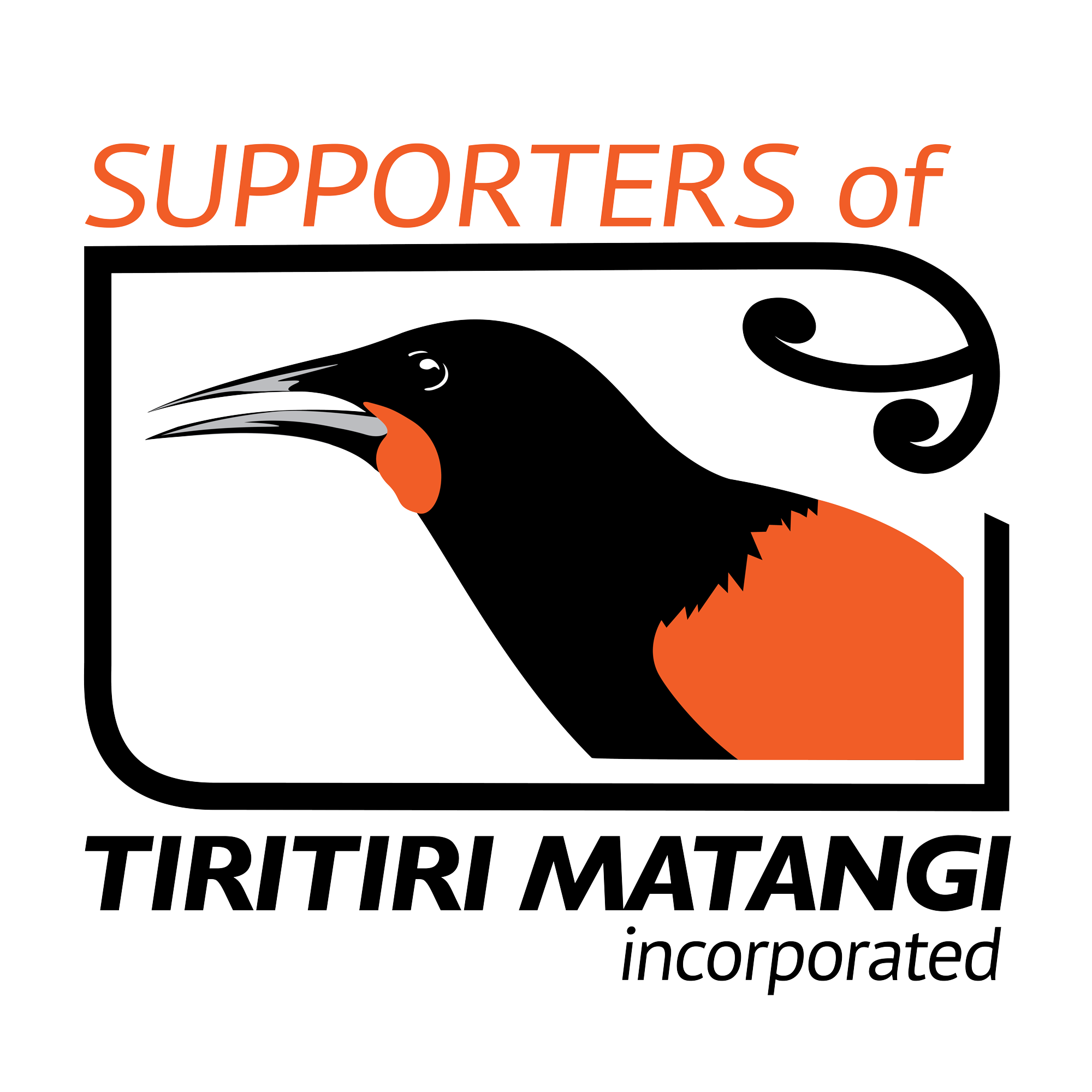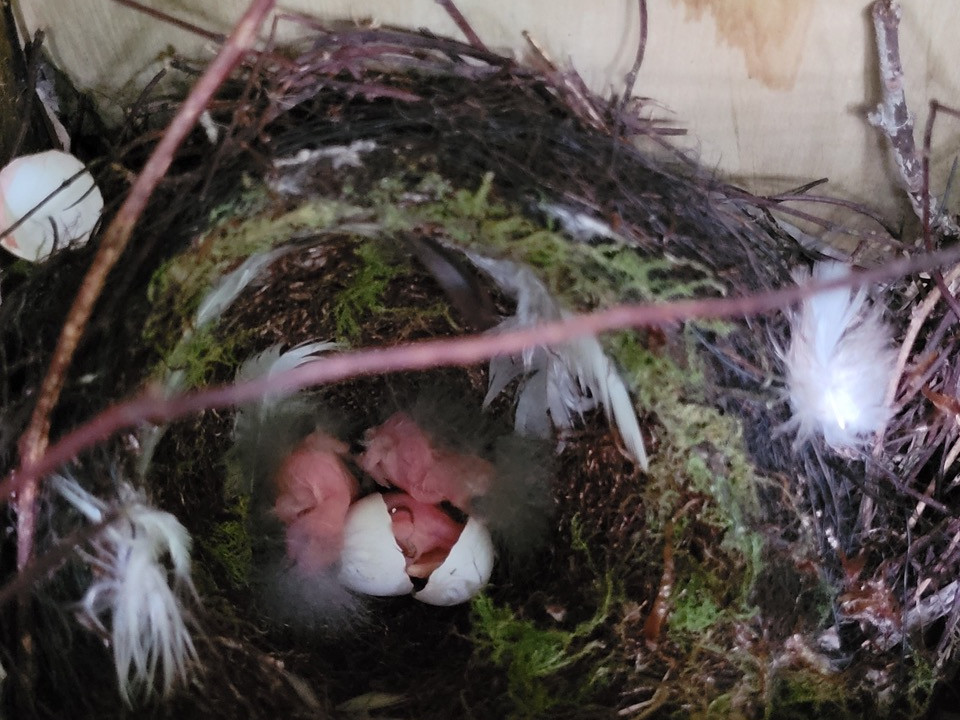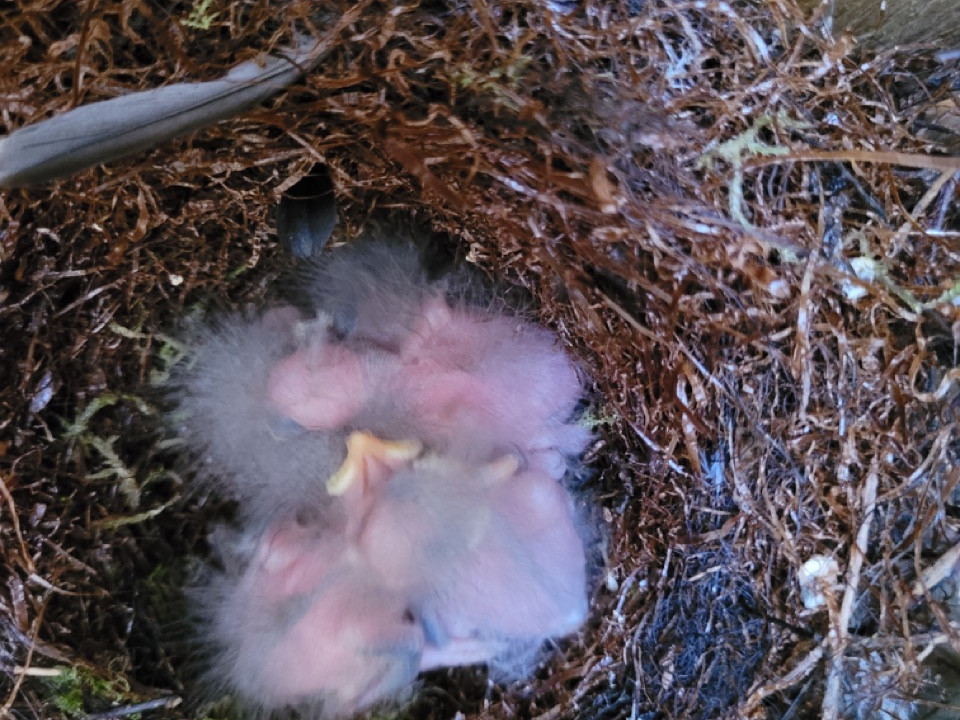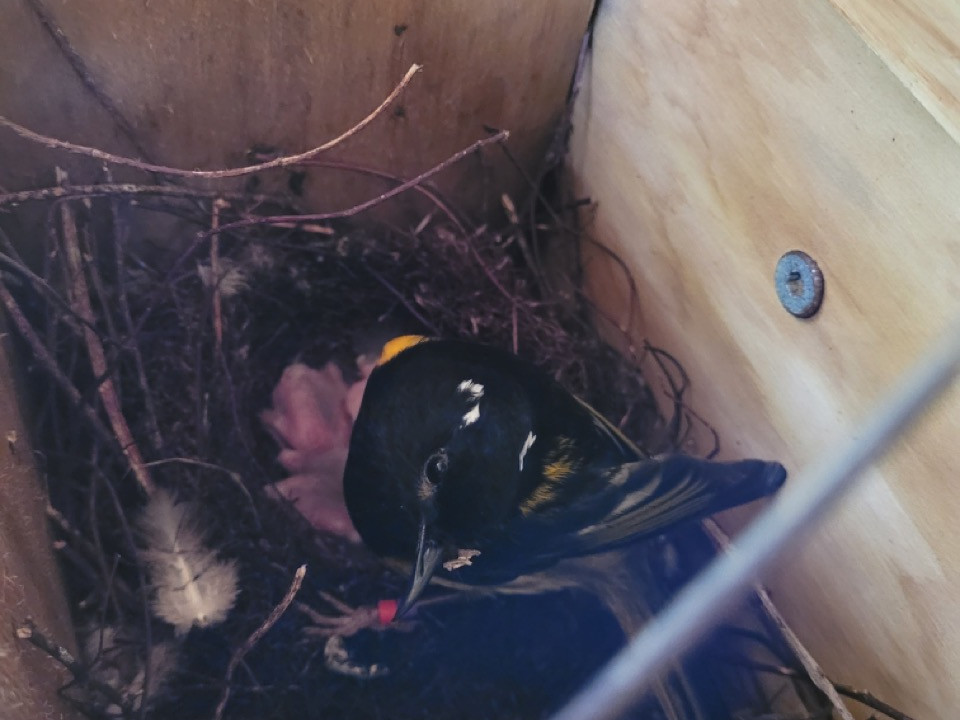A day in the life of the hihi team (October Edition)
Author: Emma GrayDate: 2nd November 2023Photos and video taken by Emma Gray
Our hihi team has settled into its semi-permanent form as our hihi intern Maude joins us for 2 months from Switzerland. Other hihi sites often have students from the UK, USA and across Europe conducting research or interning for fieldwork experience.
Hihi continue to influence and inspire people across the globe as a model species for conservation and adaptive management. Adaptive management is the process of changing species management according to their needs based on both monitoring and research to increase species’ condition and survival. One example of adaptive management for hihi on Tiri is the provision of sugar water. Other supplementary foods have been trialled, however, those trial food diets paled in comparison to the provision of sugar water. Sugar water acts as supplementary nectar when natural food is not available, and has also been found to boost reproductive success and help our hihi babies grow big and strong.
Speaking of hihi babies, our first wave of hihi babies has started to hatch. The females seem to be incubating the eggs a little longer than the expected 14 days, likely due to the ambient temperature. As long as the eggs hatch at all, that’s all I ask for. The rest of the females seem to have taken a pause in nest-building activity or laying eggs despite the nests being ready. This is likely due to the windy wild weather we seemed to have at the end of September/start of October putting off our breeding females.
There is no shortage of hihi sightings as the sugar water uptake has exponentially increased going from 1 litre in a day to 10 litres a day at some hihi feeders. Last month saw the lowest consumption this year at only 155 litres total, while October is back amongst the middle ground at 756 litres total. We continue to argue with the tūī guarding three of our six feeders. This is also contributing to the large amount of sugar water consumed at other feeders as they all gather away from the aggressive tūī.
Emma continues to be impressed as the females never make her wait long when coming to check the nests. While females are incubating you could potentially be waiting up to an hour for a female to leave the nest to discover what she has underneath. Emma waits for only a few minutes, so far the maximum is 22 minutes, for females to hop off the nest and show her what is underneath. Some females are a lot quieter when leaving the nest, and others make a bit of a ruckus if they spot you and spread their wings to make themselves look bigger as they attempt to chase you away.
No harm comes to the birds, we quickly peek inside the box to know what is going on and leave the female alone until the next check in a few days. Sometimes we even see the males helping to feed the chicks, which is a surprise as the females do most of the work. Hopefully, next’s month update will have many more eggs and hihi babies to report back about.
Citations for supplementary feeding trials for hihi
Ewen, J. G., Walker, L., Canessa, S., & Groombridge, J. J. (2015). Improving supplementary feeding in species conservation. Conservation Biology, 29(2), 341-349.
Armstrong, D. P., & Ewen, J. G. (2001). Testing for food limitation in reintroduced hihi populations: contrasting results for two islands. Pacific Conservation Biology, 7(2), 87-92.
Walker, L. K., Armstrong, D. P., Brekke, P., Chauvenet, A. L. M., Kilner, R. M., & Ewen, J. G. (2013). Giving hihi a helping hand: assessment of alternative rearing diets in food supplemented populations of an endangered bird. Animal Conservation, 16(5), 538-545.
Castro, I., Brunton, D. H., Mason, K. M., Ebert, B., & Griffiths, R. (2003). Life history traits and food supplementation affect productivity in a translocated population of the endangered Hihi (Stitchbird, Notiomystis cincta). Biological Conservation, 114(2), 271-280.
Mather, E., Fogell, D. J., McCready, M., McInnes, K., & Ewen, J. G. (2021). Testing management alternatives for controlling nest parasites in an endangered bird. Animal Conservation, 24(4), 580-588.




